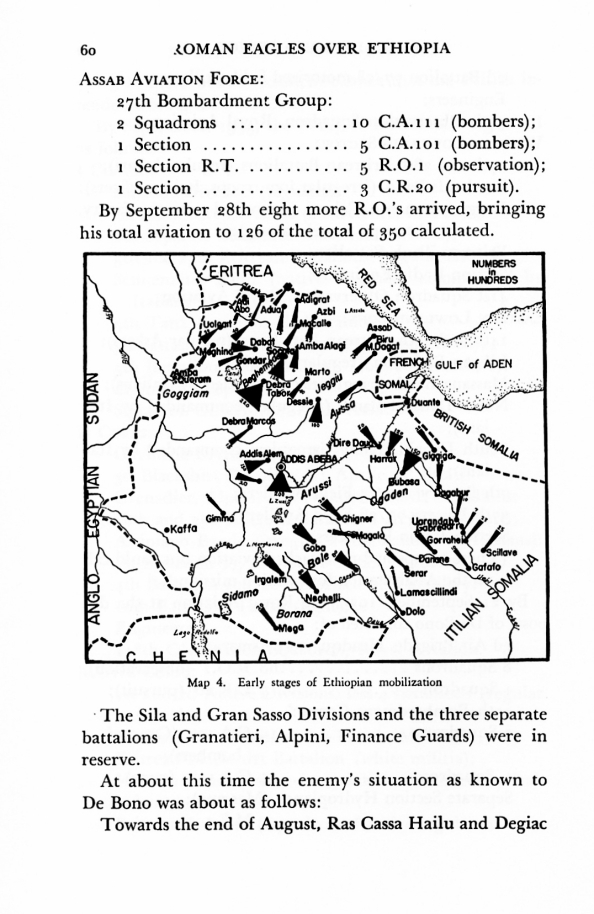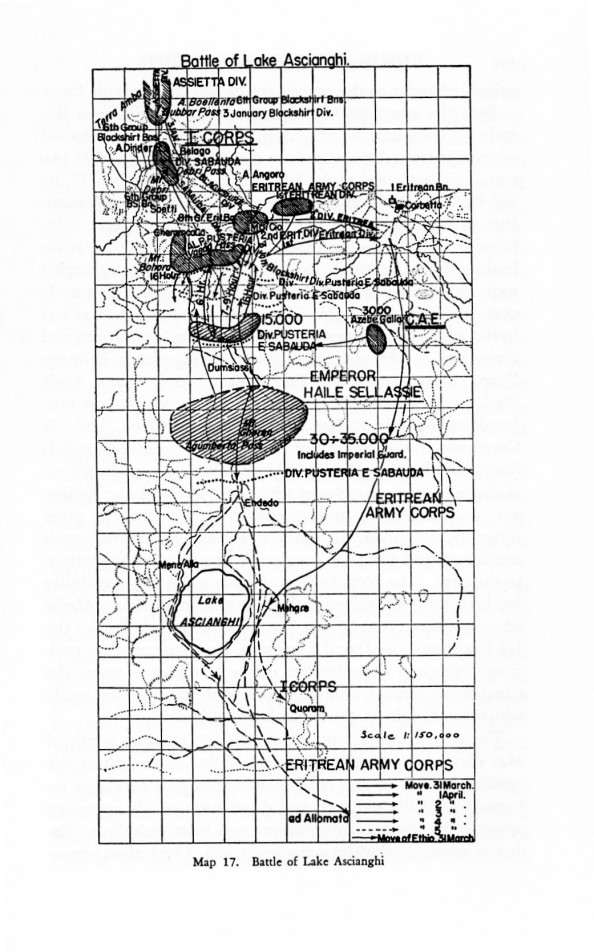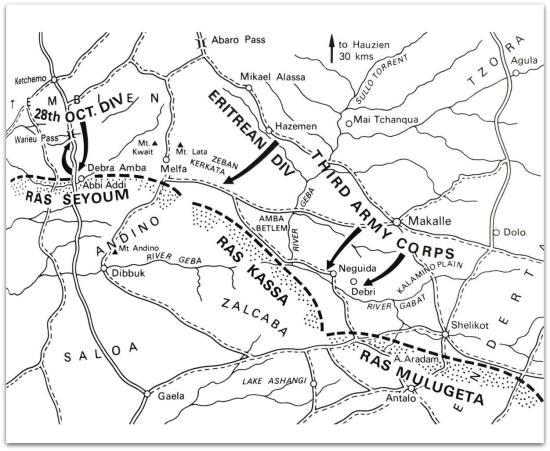 Roman Eagles Over Ethiopia really starts to get into the nitty-gritty of how the Italo-Abyssinian War played out. Written by Colonel US Marine embedded with the Italian forces, he gives a very detailed account of the military operations and aspects of the war in his role as military observer.
Roman Eagles Over Ethiopia really starts to get into the nitty-gritty of how the Italo-Abyssinian War played out. Written by Colonel US Marine embedded with the Italian forces, he gives a very detailed account of the military operations and aspects of the war in his role as military observer.
Printed by Battery Press the publisher gives the details of the title as follows.
“Originally published in 1940, Roman Eagles over Ethiopia sets forth the events leading up to the expedition, the various handicaps of terrain and climate, the traits and defense of the natives, and the complete movements of combat operations by the Italian Army under Generals De Bono ,Badoglio and Graziani. In addition to the narrative of the battles and marches, the author provides the motivating factors of the campaign. Dispositions, successive positions, communications, supply and all of the tactics and strategy of the operations are depicted in an additional 25 clear explanatory maps. This is the 10th release in the Battery Press European War Series. 2003 hard bound, no dj as issued, 6×9, xii, 201 pages and 53 photos & 25 maps.”
As you can see there is a lot to offer the Abyssinian War reader when it comes to the military aspects of the conflict. Valle’s detailed account gives troops numbers, orders of battle and dispositions for the Italian army, as expected given his access to information as a military observer. His information on the Ethiopians is less precise, usually limited to round numbers and types of troops, no doubt being limited by his access to accurate records or assessments of any kind. Nevertheless, you still get enough information to picture what forces the Italians were fighting against in their operations. The pictures are excellent as they show many aspects of the conflict ranging from personalities, equipment and terrain. As he was embedded with Italian forces you naturally get an Italo centric view of the war.
The maps are equally valuable as they clearly allow the reader to keep pace with the narrative and understand the flow of the text. One minor complaint is that some are hard to read as so much information is condensed onto the page. One wonders whether they were originally much larger and have been reduced for the format of the Battery Press edition. This is only a minor quibble however as all are readable and supplement the text to convey a good understanding of the subject matter.
The operational study within the book is divided into three parts. The first covers the early northern operation of General De Bono running from pages 49 to 86. Then the heart of the narrative covers the subsequent campaign by General Badoglio running from pages 87 to 163. Lastly the southern operations under General Graziani from page 164 to 210 finishes the narrative, rather abruptly it must be said. No detailed index is provided which would have been useful in a modern edition.
Within each section Valle gives a detailed operational narrative and subsequent analysis of the operations undertaken by both sides. Invariably there is a small amount of bias toward the Italians in his summations but overall the essence of what he is saying is fair and balanced, even if sometimes it doesn’t come across that way. This doesn’t diminish the worth of the analysis or effect the operational details therein, all of which can be said to be even-handed. He gives credit where it is due and criticises both sides when required.
For the more serious student of the Italo-Ethiopian War this book cannot be recommended highly enough. The book itself is derived from the more detailed observation reports published by the Office of Naval Intelligence as – Diary and Reports of the U.S. naval observer of Italian operations in East Africa, March 1937 by Del Valle, Pedro A. These reports provide more details and represent a better source than Roman Eagles over Ethiopia, however this reviewer has not seen them and cannot find them available online – the search continues. in the mean time, Roman Eagles ably fits the bill for a readily available and affordable study of the Italo-Ethiopian War and provides an excellent resource book for The Abyssinian Crisis.


 I should have got to this title in the very beginning but better later than never. There are a number of reviews of this Osprey title online and Amazon has a
I should have got to this title in the very beginning but better later than never. There are a number of reviews of this Osprey title online and Amazon has a  Angelo Del Boca’s 1965 title, The Ethiopian War, at 289 pages is a good book from a war gamer’s perspective. Boca avoids the detailed lead up to the war (which Mockler’s book ably handles) and gets into the detail of the campaign. Written as a military history it focuses squarely on that, so it really gives you the ‘meat’ of the military aspects of the war in a highly readable form.
Angelo Del Boca’s 1965 title, The Ethiopian War, at 289 pages is a good book from a war gamer’s perspective. Boca avoids the detailed lead up to the war (which Mockler’s book ably handles) and gets into the detail of the campaign. Written as a military history it focuses squarely on that, so it really gives you the ‘meat’ of the military aspects of the war in a highly readable form.